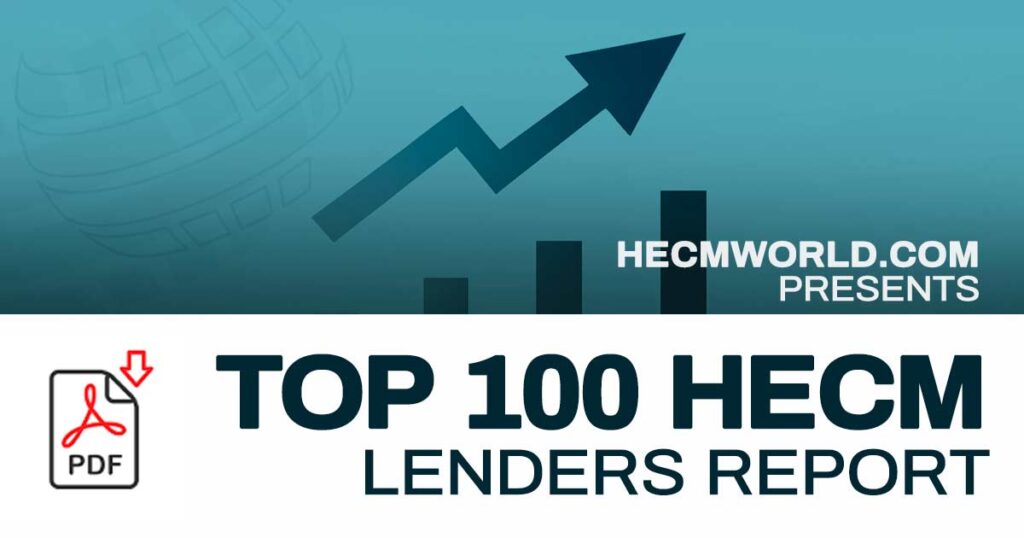*** HERE’S LINK TO OCTOBER REPORT DUE TO BAD LINK. ***
Our email generated wrong hyperlink.
Download the October Top 100 HECM Lenders Report Here
 While Wells Fargo’s trailing HECM endorsements remain in the system, we are beginning to see a pattern in the top 10 HECM lenders in recent months. Even if we experience lower endorsement volume industry-wide for fiscal year 2012 the top players will most likely see tremendous gains in endorsements as market opportunities are seized upon.
While Wells Fargo’s trailing HECM endorsements remain in the system, we are beginning to see a pattern in the top 10 HECM lenders in recent months. Even if we experience lower endorsement volume industry-wide for fiscal year 2012 the top players will most likely see tremendous gains in endorsements as market opportunities are seized upon.
[ad#Webinar Promo websites]









2 Comments
“…Top 10 lenders will be without a a well known name.” The next sentence mentions MetLife. That’s a very well known name. Ask Snoopy.
The report looks at endorsement volume for the current month as well as for the current calendar year, i.e., the latest month and nine months of endorsement activity. It is interesting to note that the total endorsements of MetLife Bank for nine months are still not even one-half of the total endorsements for Wells Fargo. Wells has averaged more than 1,500 endorsements per month.
By stratifying the data into three groupings the endorsement activity for the nine months becomes much more significant. The first group (G1) is Wells Fargo and Bank of America since their impact should be minimal after December 31. Then there are the continuing seven lenders (G2) each of which has produced over 1,000 endorsements in the nine month period. The final group is all of the other lenders (G3).
During the first nine months of this calendar year, G1 had 32.4% of all endorsements; G2, 33.7%; and G3, 33.9%. So if the endorsement production of G1 is removed from consideration, G2 has 49.9% of all remaining endorsements and G3, 50.1%. MetLife has 37.8% of the total within G1 and One Reverse, a little less than one-half of that percentage.
Before getting lost in raw data and manipulating that data any further, what the calculations in the prior paragraph reflect is that over the last six years the industry has gone from primarily a Triumvirate endorsement production structure (Wells Fargo, Financial Freedom, and Seattle Mortgage/Bank of America) to one more reflective of an oligarchy of lenders which could easily swing between eight to twelve lenders with no truly dominant player such as Wells Fargo. If that trend continues, many things in the industry should change.
The expectation is that the percentage of production of the G2 will exceed 60% by the end of the next fiscal year. What this means is that HUD will have to be more inclusive of more lenders in creating products like Savers or gathering data to test out the impact of policy changes such as the reduction of PLFs on October 1, 2009. The endorsement production of MetLife and Genworth are not reflective of most lenders. They have a very valid belief that our products are underemployed by more affluent seniors and their marketing activities are more directed to reach that segment. Their current endorsement levels are low enough that their endorsements are skewed in relation to the market as a whole. That will help with creating a greater vacuum for more lenders to be actively recruited to participate in critical issues impacting the industry. For many of us this comes as a welcomed change.